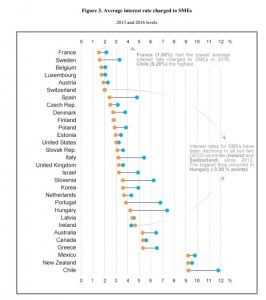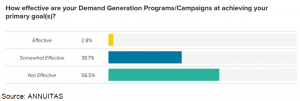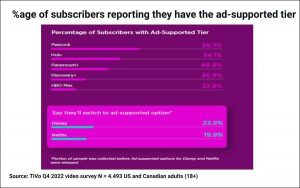Why Captioned Videos Rule
For decades, Americans mostly rejected movies with subtitles or captions. But today, they overwhelmingly embrace captioned videos, especially on TikTok. For reasons including content density and accessibility, as well as consumer multitasking and multiculturalism, the preferred way of consuming a video is to read it.
According to a recent Los Angeles Times story, the trend has peaked on TikTok, which added an auto-captioning feature in April, and allows content creators to add captions in vivid colors and fonts. TikTok’s video capabilities make the platform particularly well-suited for captioning: short, densely packed with content, often featuring music drowning out dialogue, showcasing lyrics and physical challenges that viewers attempt to copy, and distributed to consumers all over the world, speaking a variety of different languages.
However, the trend toward captioning also speaks to how consumers use their phones today. According to Dan Greenberg of Sharethrough, 75% of all consumers, and 86% of millennials, mute their phones throughout the day. If content creators don’t caption their videos, the audience won’t hear them. In addition, many consumers juggle multiple screens and audio feeds. If someone is watching Netflix while listening to Spotify and playing a TikTok video, the only way to “hear” the video is by reading captions. And even if users can hear the audio, often the only way they’ll remember it is if they can see the words as well as hear them.
Captioning also speaks to the trend toward accessibility and equity in all facets of society. Many consumers are deaf, hard of hearing, or have difficulty processing language, especially when the words are rapid-fire and spoken over music and movement. Captions allow disabled and neurodiverse people to better understand dialogue, appreciate content, and participate fully in cultural phenomena. They also level the playing field for non-native English speakers, or those who speak with an accent or in a regional dialect, enabling them to fully participate in content creation and consumption.
Captioning isn’t limited to TikTok. YouTube began auto-captioning in 2009, and one of Snapchat’s most-recognized features is the black, user-generated caption across the center of an image. Many Facebook videos contain captions, and of course, captioning allows for dialogue in an online ad to be understood, even if users have muted their audio. Captioning makes sense for virtually any type of online video, across any platform.
What best practices should brands follow when captioning their online videos?
*Include everything. Don’t be tempted to shorten, simplify or sanitize dialogue in captions. For those who are listening and reading at the same time, the difference is jarring and interferes with their natural language processing. For those who are reading only, it’s a form of condescension. Transcribe faithfully, within the confines of the space allowed.
*Convey tone. For those reading but not listening, seeing the words doesn’t convey complex tones such as sarcasm, humor or self-pity. Even those who can hear well sometimes have issues interpreting tone, especially among the neurodiverse. So make sure to provide tone indicators to give clear guideposts on how language should be interpreted.
*Keep it on-brand. Captions don’t need to look like closed-captioning text on TV, with white, all-caps text in a 1980s computer font on a black background. The words need to be easy to read, but you can keep them on-brand, and consistent with the look and feel of the video, campaign and brand style guide.
Brands that know how to tell their story with pictures and sounds as well as words will spread their message to a larger — and much more diverse — group of consumers.(44)
Report Post








